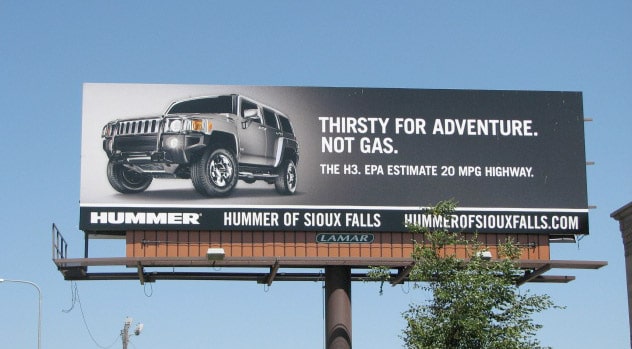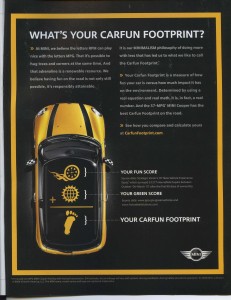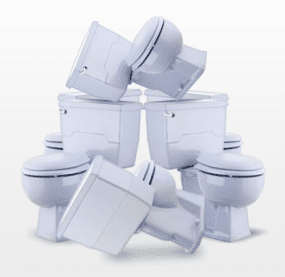Do you think the fur industry is green?
Does Nestle Waters really care about conservation?
Can the Hummer possibly be more thirsty for adventure than gas?
If you’re leading with a message of sustainability, the shoe must first fit. In an earlier article, I wrote about our three-legged bar stool test for sustainable marketing. Is your green marketing “Approachable,” Believable,” and “Doable?” In that piece I covered “approachability.” Now let’s talk “believability.”
Believability is about congruity. The above green marketing claims are simply not believable extensions of the advertiser.
Clorox went to great lengths, including product testing by groups like the EPA and the Sierra Club, before they launched their much-applauded Green Works line of cleaning products. They knew that for Clorox, historically a bleach-producing company, to be believable with the eco-conscious consumer, that they had to be completely transparent and insure that their products were not only green, but worked well.
Where Hummer puts the breaks on its sustainability believability, Mini Cooper completely outperforms in this brand position. The runabout’s “Carfun Footprint” campaign brilliantly attaches the brand’s engineering features to believable green driving attributes.
They put a nice spin on the notion of reducing your carbon footprint by selling the fact that you can have fun doing it too.
Kohler’s “Save Water America” campaign offers another terrific example of believable green marketing.
The water conservation education promotion donates $1 worth of water-efficient products to Habitat for Humanity for every person who takes the short water quiz on their site. Their goal is to donate $1 million in water efficient products that will outfit about 600 Habitat for Humanity homes.
Kohler’s actions are stronger than their words. Here are the six things they’re doing that are really smart, AND believable.
- Kohler is selling by educating: The quiz highlights the fact that nearly 50% of all toilets in America (about 100 million) are old school and waste at least two gallons of water with EVERY flush.
- They found a fun way to talk about your toilet: How else do you engage customers about retrofitting their toilets than to literally have toilets rain down on you during the quiz. It’s kind of cool. Plus, they direct you to toilet rebate programs in your state where you can turn in your old toilet for a new, water-efficient one through your town or city.
- They make water conservation interesting: Saving water isn’t always the most romantic subject. Kohler does a nice job here of engaging the visitor about the importance of water conservation throughout the home.
- A tangible and relevant approach to cause marketing: Teaming with Habitat for Humanity is a natural extension of the promotion. Kohler started with $500,000 in seed money, and have had about 4,500 hits to their quiz.
- Demonstrating industry leadership: Kohler products are inherently about water use, and now more than ever, water efficiency. By helping us all be greener (or bluer) through product demonstration, education, and cause marketing, Kohler is doing what an industry leader should: Providing the technology and education to make us all more environmentally sensitive consumers.
- Singular focus on toilets: Too often marketers try to accomplish too much with any one promotion. Kohler could’ve also promoted low flow shower heads and faucet aerators as other important ways to save water in your bathroom, but that would’ve diluted their message. It’s all about toilets.
Who do you think does a credible job of sustaining their green marketing with believable promotion and action? Who do you think doesn’t?














at 8:56 am
[…] by creating green marketing about your sustainability efforts that is “Approachable,” “Believable” and […]
at 2:24 pm
[…] is part-three in a series of articles about the “Approachability,” “Believability” and “Do-ability” of your sustainable […]